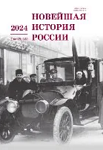Турецкий вектор в общественно-политической жизни северокавказских мигрантов в 1920–1940-е годы
Turkish Vector in Social and Political Life of the North Caucasian Migrants in the 1920–1940s
Author(s): Irina Leonidovna BabichSubject(s): Sociology, Political history, Social history, Politics and society, Interwar Period (1920 - 1939), WW II and following years (1940 - 1949), Migration Studies
Published by: Издательство Исторического факультета СПбГУ
Keywords: North Caucasus; migrants; Turkey; Circassian peoples; Said Shamil;
Summary/Abstract: The aim of this article is to study the role of Turkey in the formation and further development of the socio-political life of North Caucasian migrants in the 1920s–1940s. in the Europe This study was based on archival materials of France and Russia. The history of relations between the Turkish authorities and Turkish citizens, on the one hand, and the mountain people of the North Caucasus, on the other, includes three stages: the first stage (1919–1921), the second stage (1926–1929), the third stage (1930s). The criteria for these stages: the attitude of Turkish authorities to the USSR, to the North Caucasian peoples, the role of the descendants of the Circassian peoples (Muhajirs), who settled in Turkey during the 19th century. The author studies the role of the Turkish citizen — the grandson of Imam Shamil — Said Shamil. In 1926, he organized the People’s Party of the Caucasus Mountaineers, which included representatives of the peoples of the North Caucasus who settled in Europe in the 1920s. During the Second World War and after War the peoples of the North Caucasus, who lived in Europe, moved to Turkey for residence. The author concludes that Turkey during this period was not interested in supporting the North Caucasian peoples in their struggle for independence.
Journal: Новейшая история России
- Issue Year: 14/2024
- Issue No: 48
- Page Range: 657-669
- Page Count: 13
- Language: Turkish

